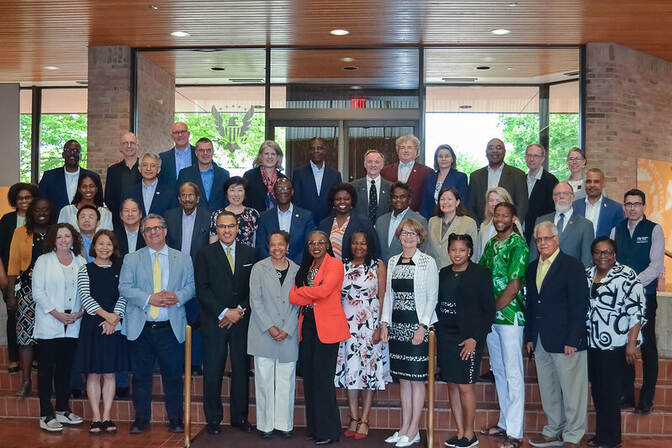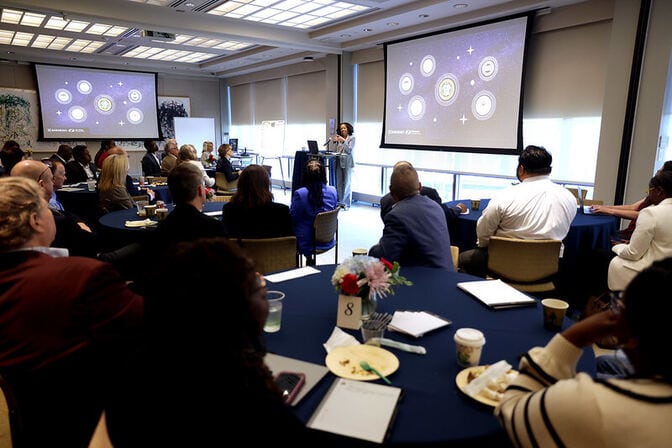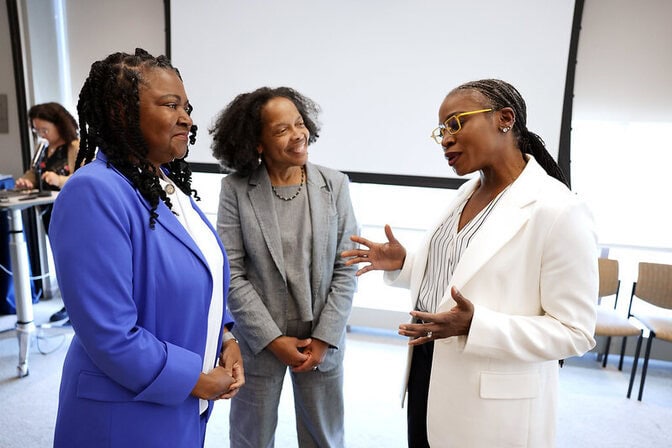
How to grow HBCU research programs with partnerships—and why it matters
New report recommends steps for meaningful, innovative, lasting collaborations.

New report recommends steps for meaningful, innovative, lasting collaborations.
In an effort to strengthen the U.S. science and technology workforce, a coalition of engineering leaders from Historically Black Colleges and Universities (HBCUs) and major research institutions today released a report on how to work together to expand research programs at HBCUs.
The recommendations emerged from the HBCU Engineering Deans Summit, a first-of-its-kind gathering earlier this year organized by the HBCU Engineering Deans Council and hosted by Michigan Engineering. It brought together more than 30 leaders from HBCUs, Research 1 (R1) institutions and several funding agencies to discuss better ways to partner and support boosting HBCUs’ research capacity. Read the report.
“The report offers a roadmap for navigating collaborations between institutions that, while different in significant ways, are often working toward common goals,” said Joyce T. Shirazi, dean of the School of Engineering, Architecture and Aviation at Hampton University, an HBCU, and co-chair of the Summit.

Among the recommendations are: harnessing the breadth of perspectives to develop innovative new research directions that disrupt the status quo; working together on curriculum, teaching and advising to build more time for research at HBCUs where faculty have higher teaching loads; and advocating for more equitable distribution of research funding.
R1 institutions produce the lion’s share of university-based research and Ph.Ds in the United States. They also get most of the research funding. At present, none are HBCUs. That’s expected to change next year, with several likely to be added under the latest criteria. Summit participants hope it’s a turning point.
“For the sake of a secure national economy, a strong research workforce, and an innovative scientific enterprise that serves everyone, our HBCUs need dynamic research programs that offer graduate degrees and set students up for leadership roles. We can’t afford to leave talent on the table,” Shirazi said.
Despite making up less than 3% of U.S. colleges and universities, HBCUs produce nearly 25% of Black science, technology, engineering and math (STEM) bachelor’s graduates, and provide the undergraduate education for one-third of Black STEM students who go on to earn doctorates. Their outsized impact is expected to grow due to shifting enrollment patterns in the wake of the ban on considering race in admissions and potential impacts of the political landscape.

“We’ve come up with real, actionable steps that we believe can benefit everyone. They can help address the country’s looming STEM talent shortage. They’re responsive to the surges in HBCU enrollment we’re beginning to see since the ban on affirmative action. And they can keep the U.S. at the forefront of innovation,” said Lola Eniola-Adefeso, who co-chaired the Summit as Michigan Engineering’s associate dean for graduate and professional education. In October, she became dean of the University of Illinois Chicago College of Engineering.
The recommendations are organized into four steps:
The report includes numerous tactics for implementing each recommendation, as well as a section acknowledging difference and bias that participants identified during the Summit. It also acknowledges systemic factors that give more research intensive universities an advantage—chief among them are the well-staffed research offices that guide faculty through the award process from start to finish.
“We know there are great ideas everywhere,” Eniola-Adefeso said. “Through this work, one of our goals is to set up a system that brings them to light.”
Nicole Casal Moore
Communications & Public Engagement Director